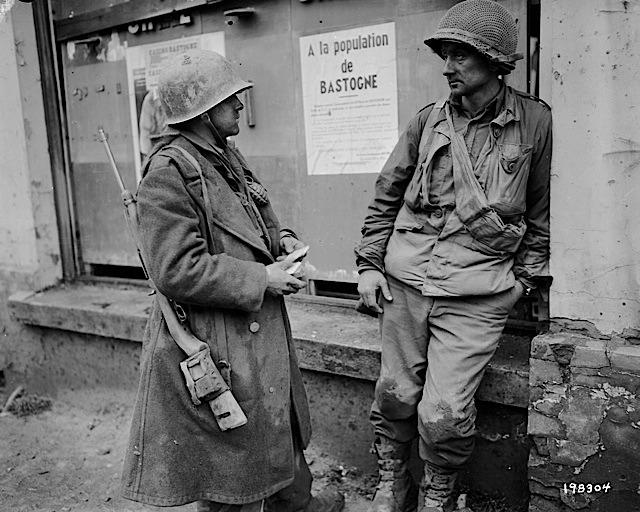
The manager of one of the biscuit company complained in a letter to the laboratory that there must be a secret method of blending the dough for the Defense biscuit used in the K ration, adding that "this is the most difficult mixes I have ever tried to put together."
The earliest biscuit used for the "parachute ration" was a pemmican biscuit. This biscuit consisted of wheat, soybeans, corn, oats, dried skimmed milk, and beef muscle and liver compressed together with hydrogenated oil. This biscuit could be eaten dry or crumbled into hot water making a kind of porridge. The ration was based on this biscuit as the main food component. Obviously this ration wasn't received enthousiasticly by the men who tested it. Something new had to be developed instead of these pemmican biscuits...
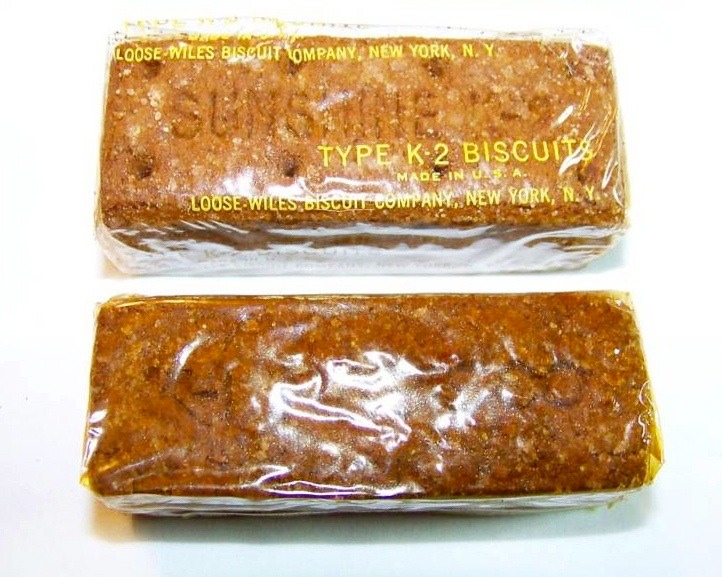
Top: early SUNSHINE K-2, with manufacturers name printed on the cellophane packaging. Bottom: early K-1 NABISCO (National Biscuit Company).
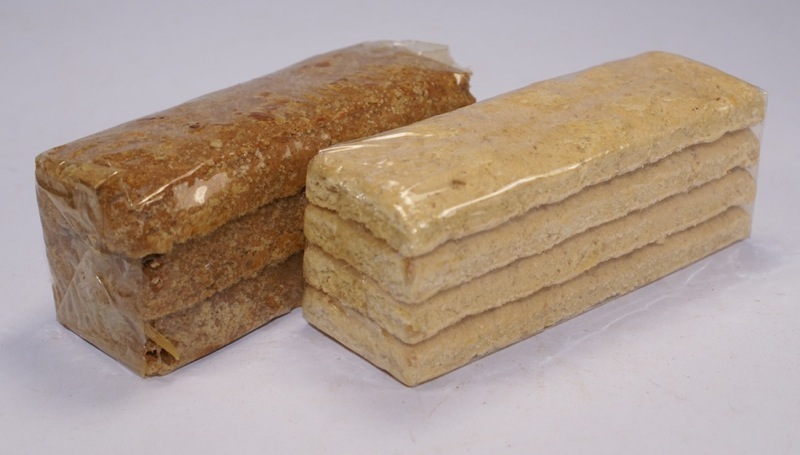
Early K1 and K2 biscuits from the same unit, note that there are three thicker K1 biscuits, and four K2 biscuits in their respective cellophane wrappings. (photo: 1944Supply)
When the K Ration was officially adopted in 1942 there were only two types of biscuits: the Defense biscuit and the Graham biscuit. To readily identify the biscuits they were to be inprinted with "K1" (Defense) and "K2" (Graham) and the company's name (or an abbreviation) producing the biscuits.
Early K Rations might have three thicker K1 biscuits in a cellophane package instead of four biscuits of regular thickness. As can be seen in the picture above, the dimensions of the packages are the same.
In the spring of 1943 three more types were accepted and marked accordingly with K3, K4 and K5.
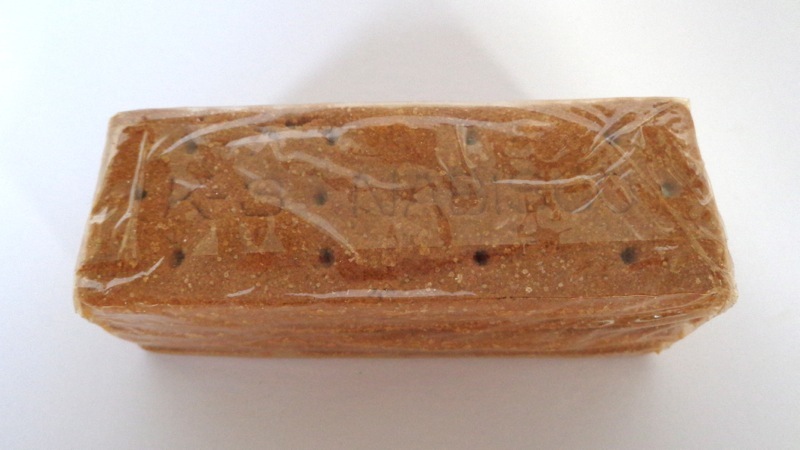
K-3 NABISCO (From an early 1944 Breakfast unit.)
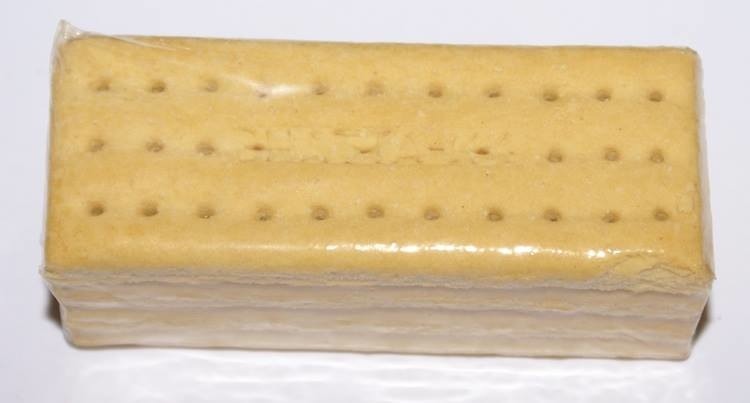
CHATTA K-4 (photo: 1944Supply)
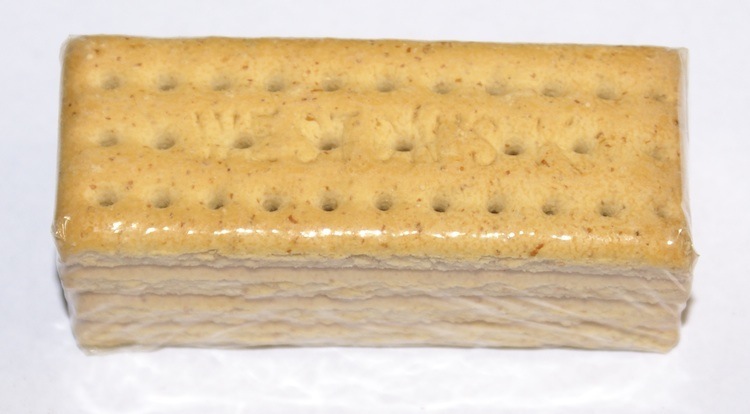
WESTON'S K (photo: 1944Supply)
It should be mentioned that the old K1 biscuit was made with a mixture of wheat flour, oat flour and soybean flour. The use of soybean flour was new and used in many ways by the army bakers. The formula for the K1 biscuit, however, proved to be too complicated. One manufacturer complained that the (early) K1 biscuit was the hardest formula he ever had to put together. This was partly because the army demanded a lower moisture content than commercially produced biscuits.
Since the Defense biscuit was the least popular with the soldiers, the K1 biscuit was now of the C-square biscuit formula. In the summer of 1944 use of the K2 biscuit was discontinued.
In the summer of 1944 the army reduced the number of biscuits for all rations to four types: Type I (a bread biscuit), Type II (a whole wheat cracker), Type III (a neutral biscuit) and Type IV (a soda cracker).
It is unclear if this new roman numerals correspondent with the old K designation. If so, with the K2 discontinued, the K1 would become the Type I, K3 the Type II, K4 the Type III, and K5 the Type IV. This is speculation, but it explains why some biscuits are imprinted with a roman numeral.
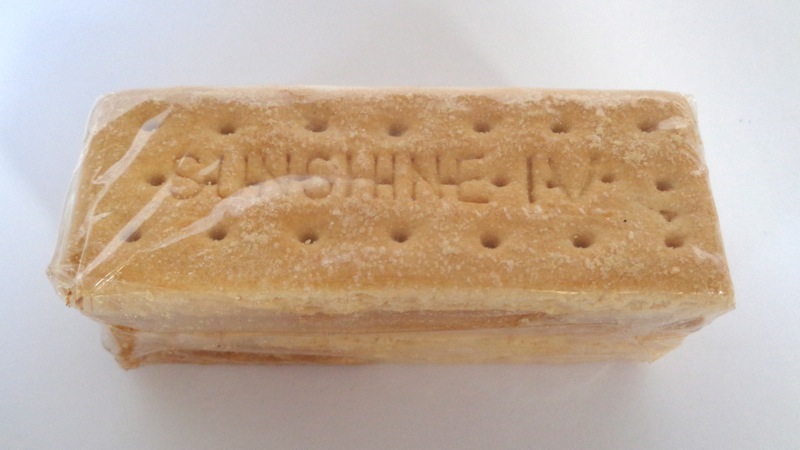
SUNSHINE IV (From an early 1945 Dinner unit.)
Finally the type imprint was discontinued and only the name of the manufacturer was imprinted in the biscuit. The packaged bischuits were delivered in properly marked boxes to the main contractor and it was up to the assemblers to make sure that two different types were packed together in a unit.
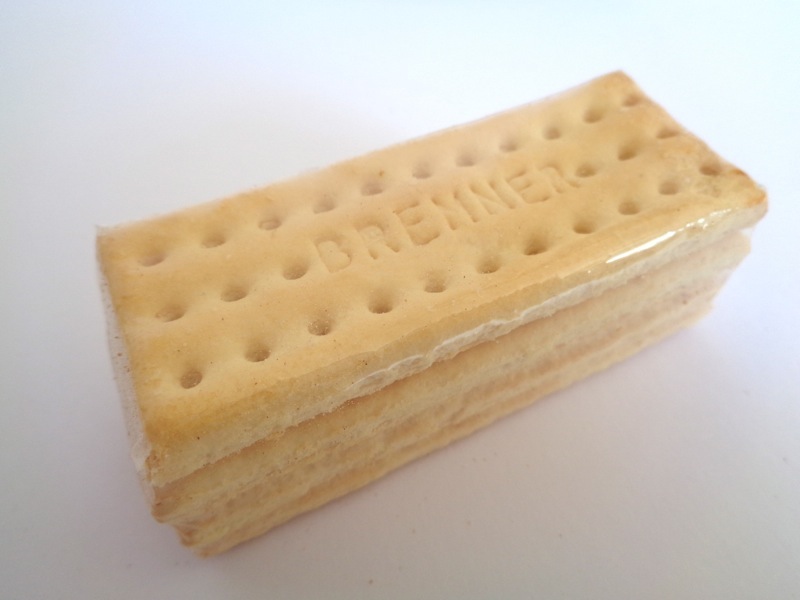
BREMNER (From a Dinner unit, early 1945.)
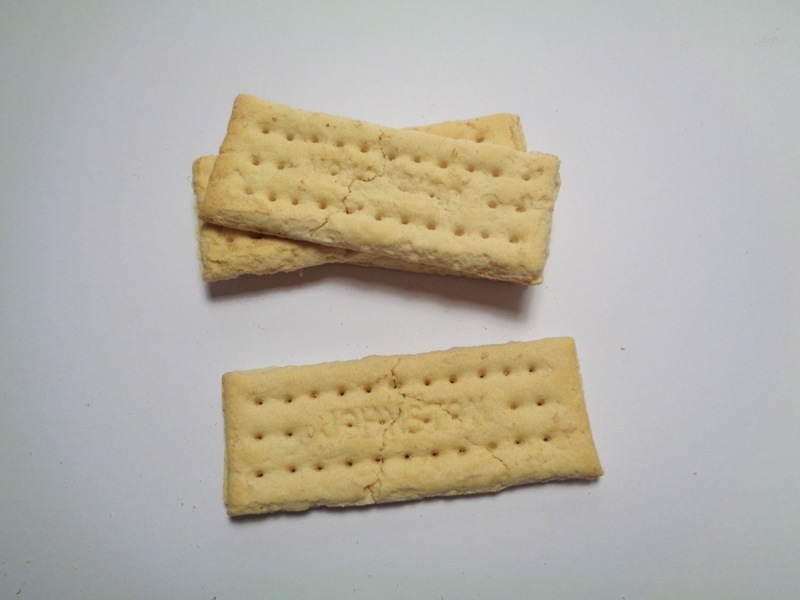
JOHNSTON (These came from the same Dinner unit as the Bremner biscuits.)
In each unit of the K Ration a combination of two packages of any type of biscuit was included. This could be either the K1, K2, K3, K4 or K5, with the K2 discontinued in 1944 and the K3 discontinued in 1945.
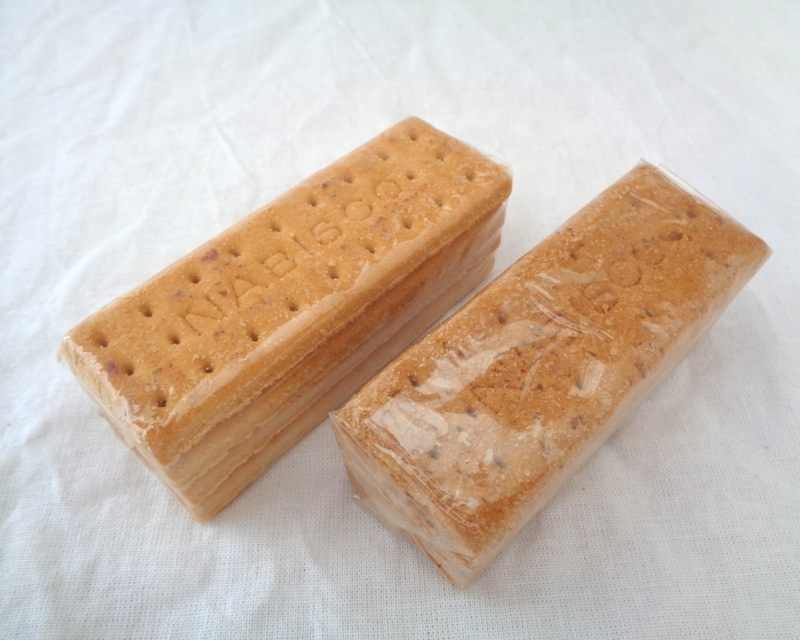
Two packages imprinted with only NABISCO.
The size of an induvidual biscuit was a rectangular not larger than 3 3/16" long, 1 3/16" wide and 5/16" thick.
These biscuits are officially refered to as Biscuit, Small Rectangular.
Four biscuits were packed together in a cellophane or waxed glassine wrapping, the package being roughly 3 3/16 x 1 3/16 x 1 1/4 inch. In practice four biscuits stacked and packaged together are as high as the width of one biscuit.
From early 1944 on, two packages of biscuits in the one of the units were sometimes replaced by one package of four square biscuits (all four biscuits being either the K1, K4 or K5 type). Whether this was done to create some variety or to be used as a substitute when the small biscuits were not available is unclear. Late 1944 specifications directs that a package of the square biscuits replaces the two packages of the small biscuits in the supper unit.
Although being called square, (by specifications 2 9/16" square) they are sometimes rectangular of size (2 9/16 by approx. 3 7/8 inch), roughly double the size of the small biscuits.

Biscuit, square. Made by J.B. CARR. (From an early 1944 Dinner unit.)

MODERN K4
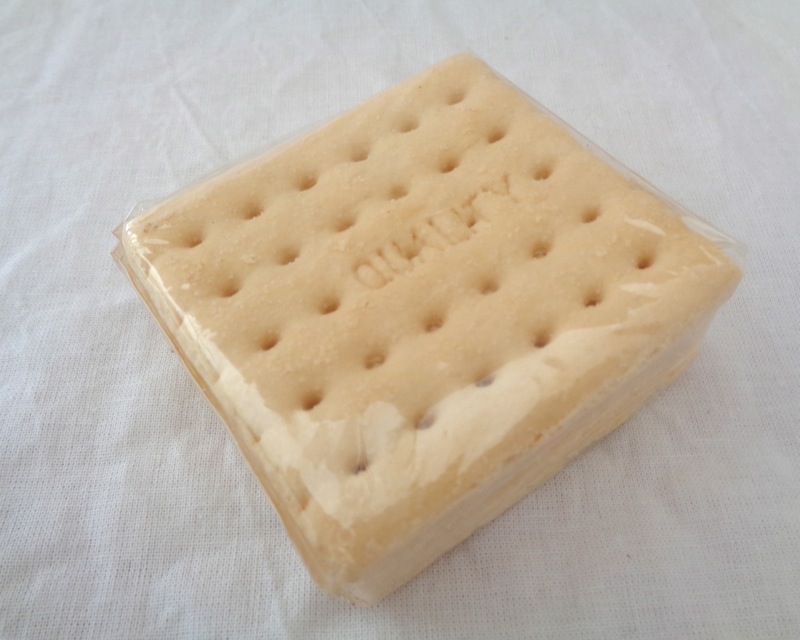
Biscuit, square. Marked QUALITY. (From an early 1945 Supper unit.)
Late 1944 one package of small biscuits in the Breakfast unit was replaced by a block of compressed cereals. This cereal was to be pre-mixed, with milk and sugar, and compressed into a one and one-halve ounce block of 3 3/16 by 1 3/16 by 3/4 inch. The compressed cereal was cellophane wrapped with the directions printed on the cellophane in black, blue, green or red ink.

Two blocks of compressed cereal. One was included in the Breakfast unit, taking the place of one package of the smal biscuits. The cereal block is smaller than the biscuits it replaced, leaving enough room to include a package of toilet paper, included previously in the Supper unit.
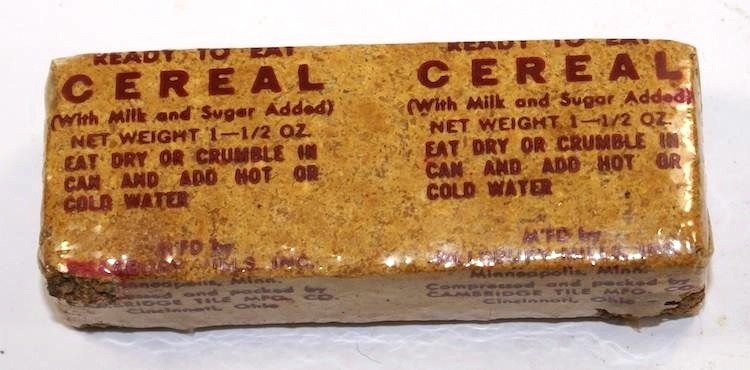
Here's a block of compressed cereal with the printing in red ink. (photo: 1944Supply)
Below are the early formulas for the old K1 and K2, and the original C-square biscuits. Parts are per weight.
K1 (Defense) formula:
- 73 parts Whole wheat flour
-103 parts Wheat flour
-100 parts Soybean flour
- 70 parts Oat meal
-112 parts Egg
- 70 parts Milk powder, skimmed
- 24 parts Sugar
-114 parts Shortenings
- 24 parts Molasses
-3 3/4 parts Salt
- 3 parts Ammonium bicarbonate
- 9/16 parts Cinnamon
K2 (Graham) formula:
-200 parts Whole wheat flour
- 50 parts Shortenings
- 15 parts Molasses
- 25 parts Sugar
- 10 parts Invert sugar
- 70 parts Milk powder, skimmed
- 15 parts Wheat germ
- 3 parts Salt
- 2 parts Soda
- 3/4 parts Ammonium Bicarbonate
C-square formula:
- 75 parts Soft wheat flour
- 25 parts Whole wheat flour
- 12 parts Shortening
- 8 parts Milk powder, skimmed
-5 1/2 parts Invert sugar
- 5 parts Sucrose
-1 1/2 parts Salt
-3 1/2 parts Malt (optional)
Soda or a substitude, no weight given.
















